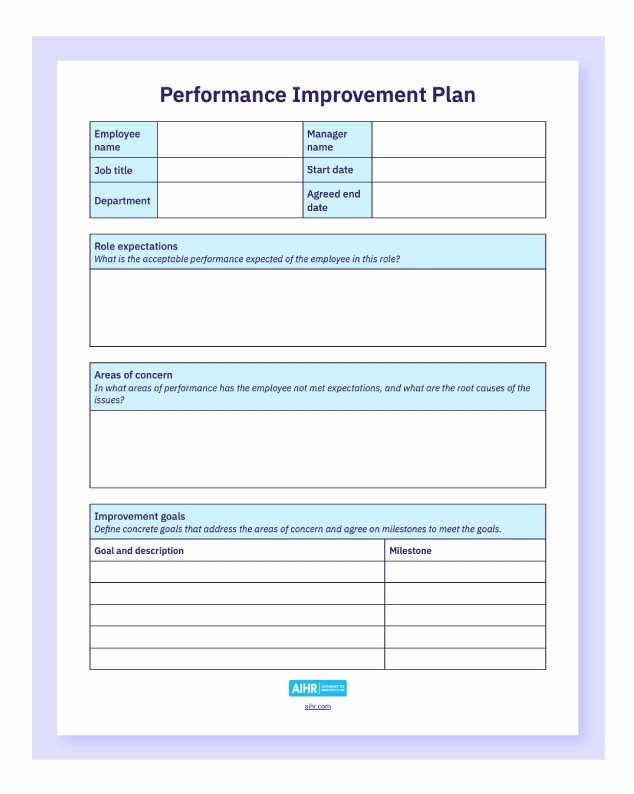Dealing with unproductive employees is a challenge that many managers and business owners face. Unproductiveness and unproductive behavior in the workplace can have a significant impact on team morale, overall business performance, and the bottom line. It’s crucial to address this issue promptly and effectively to maintain a healthy and productive work environment. In this article, we will explore how to deal with unproductive employees, and various strategies (and tools, such as a free time card calculator) for identifying and addressing them, including practical tips for managing unproductive team members.
By understanding the root causes of unproductivity and implementing targeted productivity improvement techniques, businesses can enhance employee performance, foster a positive work culture, and ultimately achieve greater success.
Why Productivity is Crucial in the Workplace
Productivity is crucial in the workplace because it directly impacts a company’s efficiency, profitability, and overall success. High productivity levels lead to better use of resources, increased output, and improved quality of work. When employees are productive, they can accomplish more in less time, which drives business growth and enhances competitiveness in the market.

Moreover, a productive work environment fosters employee motivation and satisfaction. When team members see tangible results from their efforts, they are more likely to feel valued and motivated. This, in turn, reduces turnover rates and promotes a positive workplace culture.
One effective way to boost productivity is by utilizing a time tracker. Time tracking tools help employees or direct reports manage their time more efficiently, identify time wasters, and focus on high-priority tasks. Everhour, for example, offers comprehensive time tracking and project management features that enable teams to monitor progress, allocate resources effectively, and maintain accountability. By integrating such tools into daily workflows, businesses can significantly enhance their productivity and achieve their goals more efficiently.
How to Identify Unproductive Employees
Signs of unproductivity in the workplace
Recognizing unproductive employees is crucial for maintaining workplace efficiency. Here are some key indicators:
- Missed deadlines: Frequently missing deadlines or consistently turning in late work.
- Low output: A noticeable drop in the amount of work an employee completes compared to their peers.
- Lack of initiative: Rarely volunteering for new projects, avoiding additional responsibilities, or showing little interest in professional development.
- Increased absenteeism: Frequent absenteeism or tardiness, indicating disengagement or lack of motivation.
- Poor quality of work: Consistently delivering subpar work, making frequent errors, or failing to meet quality standards.
- Negative attitude: Exhibiting a negative or disruptive attitude that affects the individual and their colleagues.
- Inefficient time management: Struggling to prioritize tasks, manage time effectively, or constantly seeming overwhelmed.
Common causes of unproductivity
Understanding the root causes of unproductivity can help address the issue more effectively:
- Personal issues: Personal problems such as health issues, family concerns, or financial stress can impact productivity.
- Lack of motivation or engagement: Employees who are not engaged or motivated are less likely to be productive. This can be due to lack of recognition, unclear goals, or monotonous tasks.
- Poor management or leadership: Ineffective management or lack of direction can lead to confusion and reduced productivity.
- Inadequate skills or training: Employees may struggle with productivity if they lack the necessary skills or training to perform their jobs effectively.
- Mismatch of job roles: When employees are placed in roles that do not align with their skills or interests, their productivity can suffer.
By identifying these signs and understanding the common causes of unproductivity, managers can take proactive steps to support their team and enhance overall workplace efficiency.
Effective Strategies to Manage Unproductive Employees
Strategies for addressing unproductivity
Dealing with unproductive employees requires a strategic approach aimed at identifying the root causes of their lack of productivity and implementing effective solutions. Here are some strategies to consider:
👩🤝🧑🏽 Open communication: Initiate a conversation with the employee to discuss their performance and any issues they may be facing. Listen attentively to their concerns and offer support and guidance where needed.
✍️ Set clear expectations: Clearly outline performance expectations and goals for the employee, ensuring they understand what is required. Establishing measurable objectives can help track progress and hold them accountable for their work.
🗣️ Provide feedback and coaching: Offer constructive feedback on areas where the employee can improve and provide guidance on how to enhance their productivity. Offer training or mentorship opportunities to help them develop the necessary skills.
🤸♀️ Offer flexibility: Be flexible in your approach to addressing unproductivity, taking into account the individual needs and circumstances of the employee. Implement flexibility in work hours, tasks, or working arrangements to accommodate their needs.
📜 Implement performance improvement plans (PIPs): If the employee’s performance does not improve despite your efforts, consider implementing a performance improvement plan (PIP). A PIP outlines specific goals and targets for improvement within a defined timeframe, with consequences for not meeting expectations.
💻 Monitor progress: Regularly monitor the employee’s progress and performance to track improvements and identify any areas that may require further intervention. Provide ongoing support and encouragement to help them stay on track.
How to manage employees with high potential but low productivity
When dealing with employees who are highly intelligent but struggle with productivity, a nuanced approach is essential. These employees often have the potential to be significant assets to the organization if managed effectively. These are strategies to help those employees unlock their full potential:
| Understand their strengths | Recognize the unique skills and knowledge they bring to the table. For instance, an employee who excels at problem-solving may be more valuable in roles that require innovative thinking rather than routine tasks. |
| Identify underlying issues | Take the time to understand what might be holding them back. It could be insecurities about certain aspects of their job, such as running meetings, creating presentations, or using specific tools. Address these issues through training and support. |
| Provide challenging tasks | Assign projects that align with their intellectual capabilities and interests. This can reignite their passion for work. For example, an employee who enjoys solving complex problems might be more engaged when tasked with innovative projects. |
| Pair with a doer | If they excel at generating ideas but struggle with execution, pair them with a colleague who is strong in implementation. This can ensure that their ideas are brought to fruition effectively. |
| Set realistic goals and deadlines | Establish clear, achievable goals with specific deadlines. Monitor their progress closely, especially in the initial stages, to ensure they stay on track. Over time, reduce the level of oversight as their performance improves. |
| Offer mentorship and support | Provide mentorship to help them navigate challenges and develop better work habits. Regular check-ins can help them stay focused and accountable. |
| Encourage autonomy | Give them the freedom to make decisions and take ownership of their work. This can enhance their sense of responsibility and motivation. |
| Use them correctly | Leverage their strengths appropriately within the organization. For example, use their expertise for generating ideas and solving complex problems while others handle execution and marketability. |
| Monitor progress | Keep track of their performance and provide ongoing feedback. Be ready to assist when they encounter difficulties but encourage them to take the initiative in seeking help. |
Discover practical ways to stay engaged and boost productivity when boredom strikes at work—read our article on productive things to do when bored!
What are some tips for dealing with unproductive team members?
Effectively managing unproductive team members requires a combination of clear communication, support, and accountability. Here are some practical tips to address unproductivity and increase productivity within your team:
📊 Gather data: Before approaching the employee, ensure you have concrete data that demonstrates their underperformance. This could include metrics such as missed deadlines, low-quality work, or feedback from peers. Data-driven discussions help to objectively highlight areas needing improvement.
🗣️ Communicate clearly: Sit down with the employee and address the issues directly. Use the data to illustrate their performance gaps and explain the impact on the team and organization. Clarity in communication ensures that the employee understands the seriousness of the situation.
🎯 Set clear expectations: Define specific, measurable goals for improvement and establish a timeline for achieving these objectives. This might include improving work quality, meeting deadlines, or increasing productivity levels.
💡 Offer support and resources: Ask the employee what they need to succeed. This could involve additional training, reallocating non-value-added tasks, or providing other forms of support. Ensure that you follow through on these commitments to give them the best chance to improve.
🧩 Encourage accountability: Make it clear that the responsibility for improvement lies with the employee. While you can provide support and resources, they need to take ownership of their performance.
🎉 Recognize improvement: Acknowledge and reward improvements, no matter how small. Positive reinforcement can motivate the employee to continue working towards their goals.
🔄 Consider role reassignment: If the employee continues to struggle despite your efforts, it might be worth considering whether they are in the right role. Sometimes, a change in responsibilities or a different position within the organization can lead to better performance.
Learn how time management apps can help work culture.
How to Implement Performance Improvement Plans (PIP)
Performance Improvement Plans (PIP) are structured tools used to help underperforming employees improve their performance.

Here’s a step-by-step guide to implementing a PIP effectively:
- Define clear objectives: Start by outlining the specific areas where the employee needs to improve. Be precise about the expectations, including measurable goals and standards that the employee must meet.
- Set a timeline: Establish a reasonable timeframe for the improvement process. This period should be long enough to allow the employee to demonstrate progress but short enough to maintain a sense of urgency.
- Provide necessary resources: Ensure the employee has access to all necessary resources and support to achieve the goals outlined in the PIP. This could include training, mentoring, or tools needed to enhance their performance.
- Create a monitoring schedule: Schedule regular check-ins to review the employee’s progress. These meetings should provide an opportunity to discuss what is working, what isn’t, and to make any necessary adjustments to the PIP.
- Offer constructive feedback: During the review meetings, provide honest and constructive feedback. Highlight improvements as well as areas that still need attention. Clear and supportive communication is crucial throughout the PIP process.
- Document everything: Keep detailed records of all communications, progress reports, and any changes made to the PIP. Documentation is essential for tracking the employee’s progress and for reference if further action is needed.
- Encourage self-reflection: Motivate the employee to reflect on their own performance and identify personal strategies for improvement. Self-assessment can be a powerful tool for personal growth and accountability.
- Adjust the plan if necessary: Be flexible and willing to modify the PIP if certain goals or timelines are unrealistic. Adjusting the plan to better suit the employee’s needs can improve their chances of success.
- Evaluate the outcomes: At the end of the PIP period, evaluate the employee’s performance against the set objectives. Determine whether they have met the goals and decide on the next steps.
- Follow through: Depending on the outcome of the PIP, you may need to take further action. This could involve extending the PIP, reassigning the employee to a different role, or, in some cases, considering termination if performance hasn’t improved.
By carefully implementing a PIP, managers can provide structured support to unproductive employees, giving them a clear path to improvement and an opportunity to enhance their contributions to the organization.
When to Consider Termination
While the goal is always to support employees and help them improve, there are situations where termination may become necessary.
There are several scenarios when you might need to consider letting an employee go:
- Consistent underperformance: If an employee consistently fails to meet performance standards despite repeated coaching, training, and PIPs, it might be time to consider termination. Persistent underperformance can negatively impact team morale and overall productivity.
- Lack of improvement: When an employee shows no signs of improvement over a significant period, even after receiving ample support and resources, termination might be the most appropriate course of action. If the employee is unable or unwilling to make necessary changes, their continued presence could hinder the progress of the team or organization.
- Behavioral issues: Termination should be considered if an employee exhibits consistent behavioral problems that disrupt the workplace, such as insubordination, harassment, or other forms of misconduct.
- Violation of company policies: Serious violations of company policies, such as fraud, theft, or breaches of confidentiality, often warrant immediate termination.
- Negative impact on team dynamics: If an employee’s behavior or performance is consistently causing conflict or negatively affecting team dynamics, it may be necessary to consider termination.
- Repeated absences or tardiness: Chronic absenteeism or tardiness that continues despite warnings and attempts to address the issue can disrupt operations and productivity. When an employee’s attendance issues become unmanageable, termination might be required.
- Failure to adhere to PIP: If an employee fails to adhere to the goals and timelines set out in a Performance Improvement Plan without a valid reason, and there is no evidence of progress or effort, termination may be the next step.
- Business needs: Sometimes, termination decisions are driven by business needs such as downsizing, restructuring, or changes in strategic direction. In these cases, termination is not necessarily a reflection of the employee’s performance but rather a business necessity.
Before making a termination decision, it is essential to:
- Review documentation: Ensure all performance reviews, PIP records, and any relevant communications are well-documented and support the decision.
- Follow legal and company procedures: Adhere to legal requirements and company policies for termination to avoid potential legal issues.
- Consider alternatives: Explore any possible alternatives to termination, such as reassignment to a different role that might be a better fit for the employee’s skills and strengths.
- Consult HR: Engage with HR professionals to ensure the termination process is handled fairly, consistently, and legally.
Termination should always be a last resort after all other efforts to support and improve the employee’s performance have been exhausted. When handled with care and consideration, it can be a necessary step to maintain the overall health and productivity of the organization.
Preventative Measures
- Clear expectations: Set clear, achievable goals and expectations for each role within your organization. When employees understand what is expected of them, they are more likely to stay focused and perform well.
- Regular feedback: Provide consistent feedback through regular check-ins and performance reviews. Constructive feedback helps employees understand their strengths and areas for improvement, fostering continuous growth and development.
- Training and development: Invest in training programs to enhance employees’ skills and knowledge. Offering opportunities for professional development keeps employees engaged and improves their productivity.
- Employee appreciation and recognition: Recognize and reward employees for their hard work and accomplishments. Acknowledging their efforts can boost morale and motivation, encouraging continued productivity.
![what is shift work: definition, types, jobs+best tools [2023]](https://blog-cdn.everhour.com/blog/wp-content/uploads/2022/11/office-good-1.gif)
- Supportive work environment: Create a supportive and inclusive workplace culture where employees feel valued and respected. A positive work environment can enhance job satisfaction and productivity.
- Work-life balance: Encourage a healthy work-life balance by promoting flexible work arrangements, such as remote work or flexible schedules. When employees have the flexibility to manage their personal and professional lives, they are more likely to be productive and engaged.
- Resource availability: Ensure employees have access to the necessary resources, tools, and technologies to perform their jobs effectively. Removing obstacles and providing adequate support can enhance productivity.
- Employee engagement: Engage employees by involving them in decision-making processes and providing opportunities for growth and advancement. Engaged employees are more likely to be committed and productive.
- Health and wellness programs: Implement health and wellness programs to support employees’ physical and mental well-being. Programs such as stress management workshops, fitness challenges, and mental health resources can improve overall productivity.
- Team building activities: Organize team-building activities to strengthen relationships and collaboration among team members. Strong teamwork can lead to improved productivity and a positive work atmosphere.

Final Thoughts on How to Deal with Unproductive Employees
Understanding what is the main cause of nonproductive employee hours and addressing unproductive maintenance are crucial steps in improving workplace efficiency. By identifying unproductive employees and implementing effective strategies, organizations can foster a more productive work environment. Utilizing performance improvement plans (PIP), providing regular feedback, and offering professional development opportunities can significantly enhance employee performance. Additionally, preventive measures such as clear expectations, supportive work environments, and employee engagement initiatives can help mitigate unproductivity from the outset.
Implementing these practices not only boosts productivity but also contributes to a more positive and motivated workforce, ensuring that both employees and the organization thrive.
Everhour is the top cloud-based time and attendance system for SMB teams, including software developers, marketers, designers, consultants, lawyers, you name it! Seamlessly integrating with popular PM tools, its user-friendly interface and customizable reports make it the ultimate time tracking solution. With dedicated support, our team is here to help you promptly and with a smile!
If you’re looking to boost productivity while keeping things light, check out our collections of memes: the top timesheet memes, working from home memes, and night shift memes to keep you safe! A little humor can go a long way in keeping motivation high and stress low, helping you stay focused and efficient throughout the day!
And if you’re curious about how to improve your office productivity, we also got you covered!
Struggling with missed deadlines or team slowdowns? Learn how to spot productivity bottlenecks before they derail your projects.

